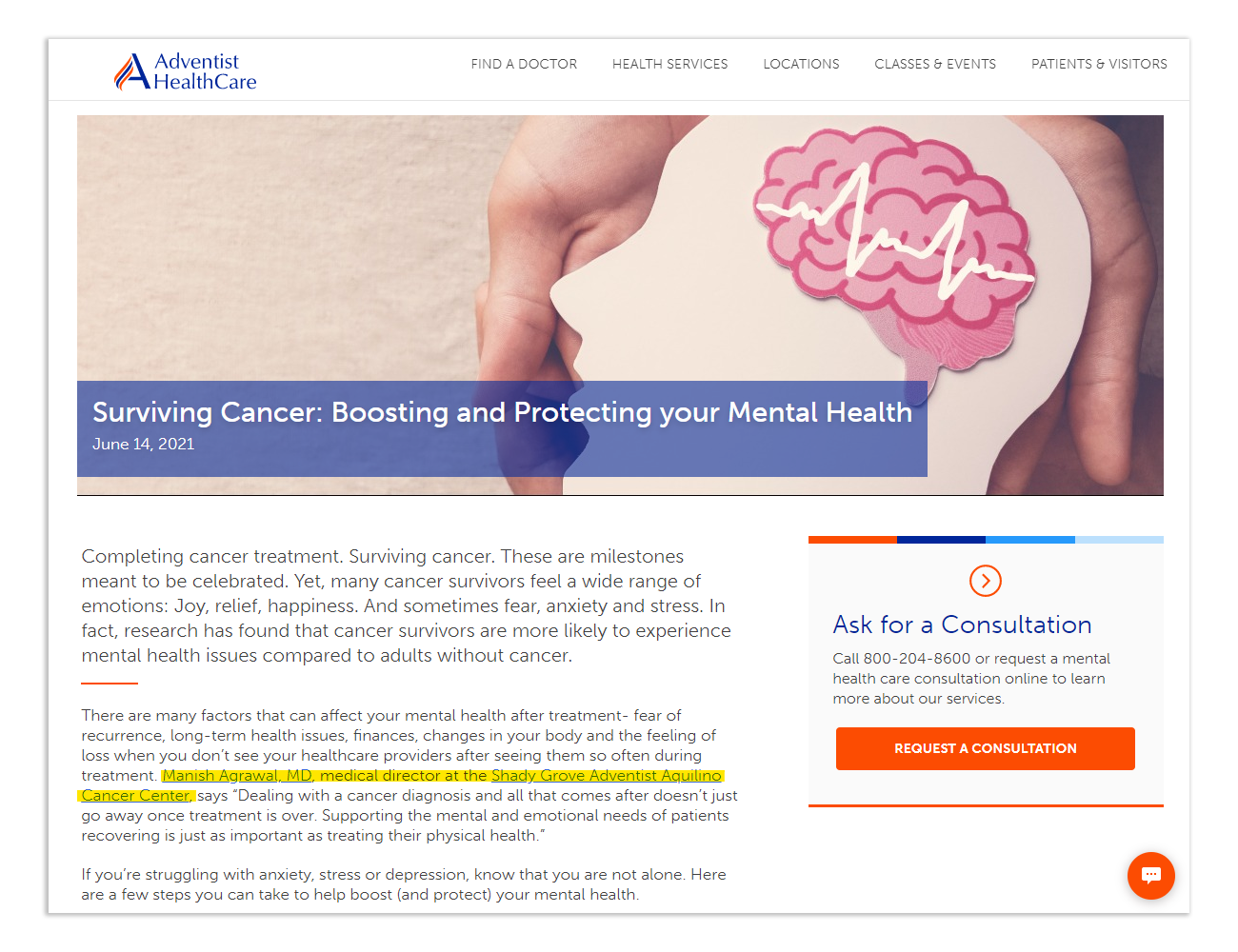Maryland-based Adventist HealthCare is dedicated to improving the health and well-being of people and communities through a ministry of physical and spiritual healing. The 114-year-old health system and integrated health delivering network offers a continuum of care and is the largest provider of healthcare in the Montgomery County region.
With deep roots focused on community wellness, Adventist HealthCare was an early mover in the content marketing space, creating a WordPress blog in more than a decade ago as a way to share expertise around health and wellness topics. The organization quickly outgrew that platform and turned to long-time partner Geonetric to build a content marketing hub in their main site, delivering a better experience for site visitors and administrators.
Moving from a blog to a content marketing hub
As an organization, Adventist HealthCare invests understanding their keys audiences and their journeys, so the team’s content marketing efforts focus on answering top question and promoting healthy habits and helpful advice. While WordPress was an effective solution for a while, Adventist HealthCare wanted to integrate the blog content more seamlessly into their main website, allowing the content to support more sophisticated journeys and ensure site visitors felt informed and connected at every step before and after treatment.
As a foundation, the Geonetric team created an overarching content strategy for site structure and taxonomy recommendations, ensuring content marketing assets shared the same categorization strategy as the rest of the website.
The content hub, named Living Well, boasts a new custom landing page design with large images, a card-like design, and the ability to filter results by certain topics. Custom interior pages have eye-catching call-outs to put readers on the path to top conversion points, like health assessments.
Cross-promoting with key providers and locations
Building the content marketing hub within the main website’s structure and domain gives Adventist HealthCare more opportunities to connect related content and build domain authority.
Using Geonetric’s taxonomy recommendations, articles in the content marketing hub are connected on provider profiles, service line pages and location pages, putting site visitors on a path to helpful content regardless of how they enter or access the site. Conversely, service line pages link back to health and wellness articles, putting site visitors on a path to helpful content regardless of how they enter or access the site.

This also means content marketing assets are part of the integrated site search, allowing site visitors to find article content alongside searches for doctors and services.
Improving optimization and overall engagement
Since launch in September 2020, the content marketing hub has delivered over 34,000 clicks from organic search engine results pages and 2.5 million organic search impressions. Other notable results:
- Total organic clicks from organic SERP to website increased by over 255,000 or 62%.
- Total search impressions increased by over 5.1 million (52.5%) since the content marketing hub was launched.
- The average position of the site in organic search results improved by 1.2 positions, or 4.2%.
With a goal of using the content in Living Well as part of the patient journey, using cross-promotion strategically was an important part of the project.
- Traffic to the locations section has increased by 34%, to the services section by 21%, and to the doctor section by 21% when compared to the previous period.
- Users who viewed a Living Well page at some point during their visit also viewed 50,144 service line pages, 38,348 location pages, and 18,917 doctor pages.
- Of the 58,382 times a user entered the site on one of the new Living Well pages, 3,377 then viewed a service line page, 3,269 viewed a Location page, and 1,761 viewed a Doctor page.
- Living Well viewers completed 6,999 calls-to-action (including phone calls), viewed a video 3,296 times, downloaded files 1,120 times, emailed the organization 298 times, and had 54 other conversions.
When it comes to website engagement, overall website sessions increased by 140% when compared to the same timeframe one year ago. There was an 18% increase in pages per session, a 42% increase in average session duration, and 23% decrease in bounce rate on the website overall since the Living Well was launched. Other statistics:
- Overall website sessions increased by 140% when compared to the same timeframe one year ago.
- Overall website users increased by 153% when compared to the same timeframe one year ago.
- Overall website page views increased by 174% when compared to the same timeframe one year ago.



